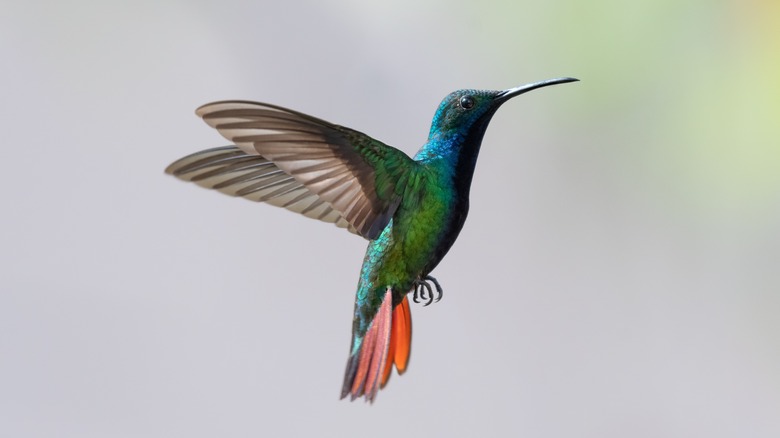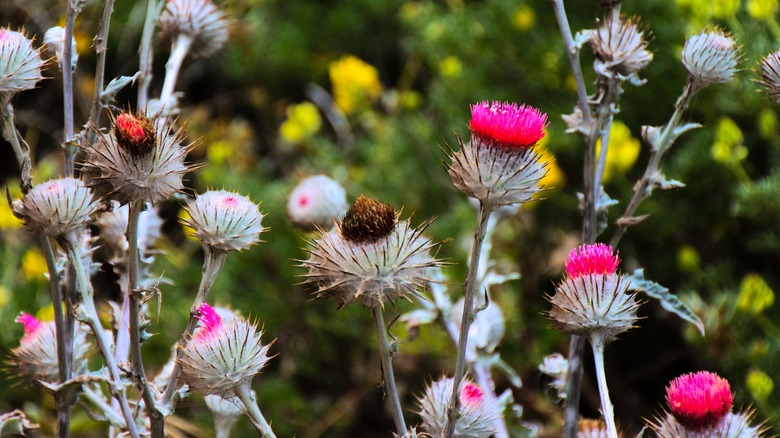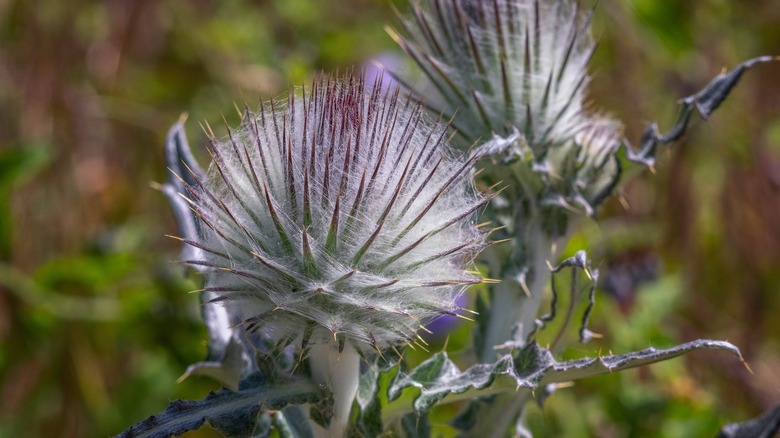Hummingbirds Love This Native Plant (& It'll Add Gorgeous Character To Your Yard)
Hummingbirds are a stunning sight to behold in the yard, and if they come around often, you should consider yourself lucky. Not only are they fun to watch, but these interesting birds also help pollinate flowers and can benefit your garden by controlling insect populations. Various things can attract more hummingbirds to your garden and backyard if they're present, including food sources and different types of flowering plants and trees.
One of the best plants you can grow for this purpose is a native thistle plant. According to the U.S. Forest Service, 58 varieties of thistle are native to North America. Cobwebby thistle (Cirsium occidentale), for example, also known as western red thistle or snowy thistle, is native to the southwest region and is a particularly good option for attracting the large range of different hummingbird types in the Southwest. This type of thistle plant will also add some gorgeous character to your yard.
Advantages of native thistles
Many thistles have a bad reputation due to their invasiveness, but this isn't true of all thistles. There are many non-invasive, native thistles that look great and have the advantage of helping attract pollinators to your yard and garden. While you may want to banish prickly thistle weeds such as invasive burdock, others are worth keeping around and intentionally adding to your yard. Aside from cobwebby thistle, field thistle (Cirsium discolor) and tall thistle (Cirsium altissimum) are commonly found in North America. These native thistle plants are interesting in appearance and can add a lot of character to a yard that wouldn't be there otherwise.
Native thistle flowers provide an excellent source of nectar, making them a favorite among hummingbirds, so consider growing some in your yard if you want them to pollinate your flowers. Native thistle will also bring other pollinators to your yard as well, including butterflies and various types of beneficial bees. Pollinators can help the soil in your yard by improving soil structure, boosting water absorption, and increasing air availability.
How to grow cobwebby thistle
Although other native thistles can also work well, cobwebby thistle is one of the most popular and well-known options for attracting hummingbirds. Cobwebby thistle, in particular, grows well in USDA zones 8 through 11, so consider adding it to your yard if you live in the Southwest U.S. This type of thistle greatly prefers full sun and won't do very well if you decide to grow it in a shaded spot. Additionally, you'll also need to be sure that this thistle has well-drained, sandy soil. The soil can range anywhere from dry to moist.
You can sow the seeds of this plant in the fall or the beginning of spring. Cobwebby thistle will typically take about two to eight weeks to germinate. In spring or autumn, division occurs. This biennial plant will take two years to flower. Once it does, it will probably die and spread seeds for further growth. Be aware that cobwebby thistle can grow to 2 to 5 feet tall. While some others, such as tall thistle, can get even taller and reach 10 feet tall, you should still be sure plan well. Place cobwebby thistle in a location where it can thrive without blocking your views or getting in the way.


